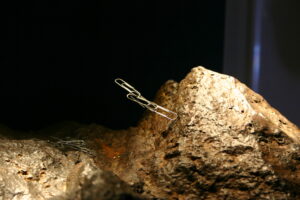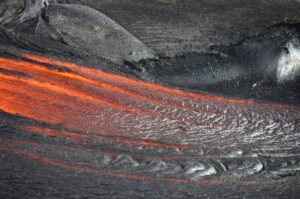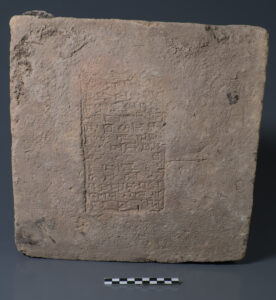
One of the great myths we learn from TV and books is that you can take a compass and follow it to the North Pole.
Folks, I am here to tell you that if you take a compass and follow its pointy little needle, it will take you to Northern Canada, but not to the North Pole. You’ll end up – if you have a boat – on Ellesmere Island, wondering where Santa is hiding.
The fact that the rotational north pole of the Earth and the magnetic pole of the Earth don’t align means if you want to actually get to the Earth’s rotational North Pole – the one the pole sticks out of on your globe – you have to look up corrections online and veer a little bit in whatever direction the correction happens to be at the moment.
If you are reading this article sometime far in the future, that Ellesmere Island that is true in early 2024 is likely no longer true.
I guess Santa has to move his workshop a lot.
Our world’s magnetic field is driven by an internal dynamo that flows in different ways over time, and it responds to our Sun’s space weather. For reasons that we don’t fully understand, our planet’s magnetic field will even violently reverse itself. The timing of these changes is highly variable, and our current northern magnetic pole has remained stable for longer than past alignments we see reflected in the rocks. This makes one wonder: do we need to worry about our magnetic field doing something wild and potentially life-threatening?
The answer is that we just don’t know. And not knowing is why we do science.
TRACKING COMPASS POINTS

One of the coolest families of rocks – in my humble, non-geologist opinion – are all those rocks that are fully to partially magnetized.
There are lots of ways to make a rock magnetic. Heck, if you take a piece of iron and hit it with a hammer over and over, it will eventually align its atoms and turn into a magnet. You also can, as many a sewer has done, store a set of metal scissors with a magnet, and the magnetic force from the magnet will slowly move the atoms in the scissors to make the scissors a magnet perfect for picking up your pins.
Natural magnetics – things like lodestone, weakly magnetic lava, and other iron-rich minerals – have a wild origin.
Lodestone gets magnetized during lightning strikes, which doesn’t tell us anything about Earth’s history, but is just amazing. I would love it if you could leave a block of iron out in Minecraft and have it become a lodestone because that would be consistent with our awesome reality.

Other magnetic rocks, like lava rock, contain atoms that aligned with the Earth’s magnetic field while the rocks originally formed. Over time, as volcanoes erupt, the various lava deposits will each align their iron with the Earth’s magnetic field. Lava fields in Scotland, Antarctica, Oregon, and Australia all hold records of more and less detail that describe how the Earth’s magnetic field has reversed, wandered, twisted, and otherwise altered over 200 million years.
These lava flows preserve long-term records of large-scale changes, but getting more detailed records needs a different solution. The weak fields recorded in lava rock don’t capture small changes and don’t let us see moment-to-moment or even year-to-year changes. Dating is also an issue; we don’t exactly have written records stating the exact year and month different lava flows occurred 780,000 years ago when the last flip occurred. This means we are trying to build up a long-term history by saying, “Well, it looks like this volcano over here went off before this one half a world away”.

If we want details about changes in the Earth’s magnetic field, we have to look at human records, and here I mean human-made bricks that locked in magnetic field records. It turns out that your typical ancient brick or baked tablet contains magnetite, and this iron-rich mineral would melt in kilns and solidify with its iron atoms aligned with the Earth’s magnetic field.
In a recent paper in the Proceedings of the National Academy of Sciences, researchers led by Matthew Howland examined 32 bricks from Mesopotamia that were baked between the third and first millennia BCE. Each brick was used to record various records and could be accurately dated to the reigns of different kings. Since bricks can get moved around and aligned any which way, they can’t be used to track changes to the alignment of the Earth’s magnetic field. They can, however, be used to track the strength of the Earth’s magnetic field.
It turns out that different places on our planet experience different strength magnetic fields, and from 1050 to 550 BCE, there was a spike in the Earth’s magnetic field. Called the Levantine Iron Age Geomagnetic Anomaly, after the region in modern Israel and Jordan that was the southern Levant region, this anomaly was a spike in magnetic strength. This spike is similar in strength to what we see in the modern South Atlantic Anomaly. Just like we can decade by decade see the South Atlantic Anomaly change in shape and intensity, these bricks reveal the Levantine Iron Age Anomaly change in strength. As a fan of archeology, I hope future data will allow us to gather enough easy-to-date bricks to reveal the anomaly also changed in location.
So if you want to understand Earth’s magnetic field, go do archeology!
Modern brick buildings, built over the last few hundred years, lock away amazing data, and all those cornerstones with construction dates are going to make future studies interesting.
ANCIENT CHURCHES CARRY MODERN MAGNETIC RECORDS

Today, Earth’s magnetic field is evolving in direction and strength. It is unclear if it is gearing up to make a flip. Some research indicates past flips may be related to massive events, such as impacts, interactions between continental plates, or the formation of new hotspots, as we see in Iceland and Hawai’i. Others believe these are spontaneous events driven by the dynamics inside our planet. Some say current behavior indicates a change is coming; others say we’re stable. Whatever the future may hold, we know that life has made it through past reversals, and life should make it through again.
It just might get confused along the way.
It’s long been known that various critters, ranging from bugs to birds, use the Earth’s magnetic field for navigation and migration. Now, research in Biology Letters led by William Schneider indicates that migrating bats also rely on magnetic fields.
I’m just going to read an excerpt from their paper to you: “We exposed bats to either the natural magnetic field, a horizontally shifted field, or the same shifted field combined with a reversal of the natural value of inclination. We later released the bats and found that the take-off orientation differed among all treatments.”

Tens of thousands of individuals fly south along the Baltic Sea coast in Latvia in August and September. Credit: Christian Giese
Put another way, they took bats, put them in what amounted to a magnetic field-filled box, changed the magnetic field they experienced, looked to see how they lifted off into the sky based on those changes, and found the bats’ direction of initial flight was tied to what they were exposed to.
I’m hoping those bats didn’t get too far before they realized their mistake. As a long-time fan of public transit, this has the feel of accidentally exiting onto the wrong street when coming out of a subway or train station.
If our planet’s magnetic fields shut down, a whole lot of life is going to find itself somewhat lost, but as we all know, life can always find a way. And in this case, it will find a way to find a way.
